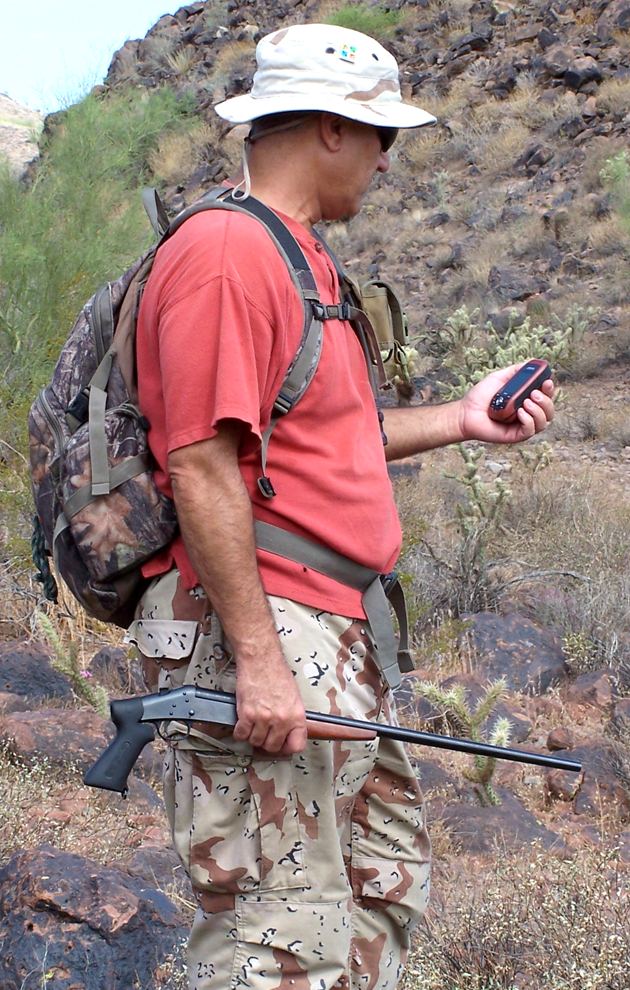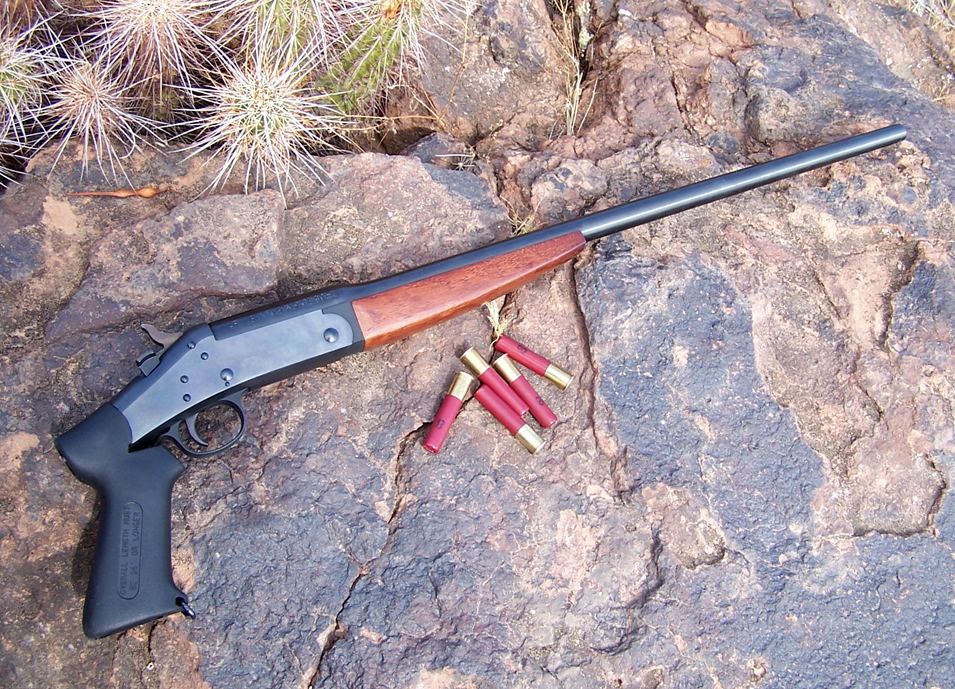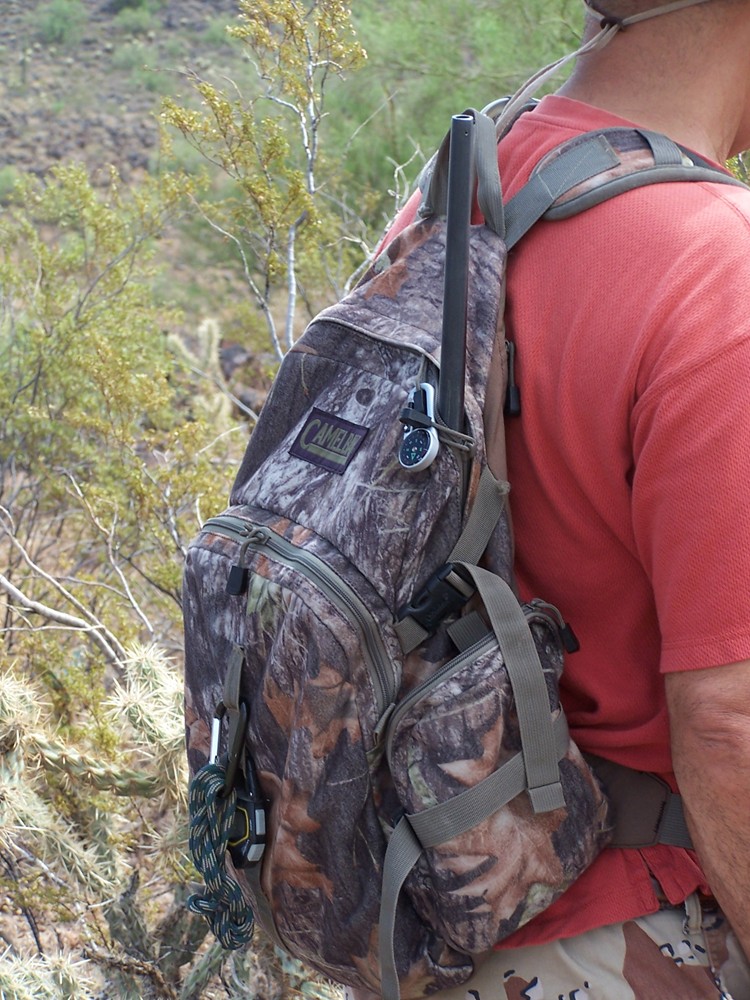Many of you know that I’m avidly involved in the GPS game/sport/activity, whatever
you want to call it, of geocaching.
In geocaching, participants hide a box of typically dollar-store type items,
somewhere out in the world, and using their GPS, they obtain the coordinates of
the hide which they post on the Geocaching.com website.
Other information is also posted on the geocache listing, perhaps describing why
the hider chose that particular location, the size of the cache, any hints on how
to get to the cache, or how to find it once the seeker arrives at “ground zero”.
Seekers use the website to learn about what cache hides are available to hunt, and
use the information posted to decide which caches they want to try to find.
Finders can take something from the geocache if they want, but if they do, they
must also leave something so that the cache remains stocked. One thing that all
geocaches must contain is a log book. The only requirement in the game is that
finders log their names in the log book to prove that they have found the hidden
cache. Finders also log their experiences in reaching the hidden treasure online
for others to read.
There are many different kinds of caches and hides. Caches in town are called
“urban caches”. These may be very small and contain only a scrap of paper as the
log book. Many of these urban caches can also be called “park and grabs”. Easy
to get to and easy to find.
At the other end of the spectrum are very remote and difficult cache hides which
may require a long and difficult drive on a very rough jeep trail. Then you have
to hike a couple of miles to the top of a high rocky mountain. Then, when you get
there, you have to rappel down a cliff to reach the cache. I have just described
one of the geocaches that I set up.
Yes, I geocache a little differently than most people who participate in the game.
I specialize in the more difficult and remote caches. There’s this guy down near
Tucson who runs an ancillary website to Geocaching.com, that compiles statistics
on all the players and geocaches in the “Deep Southwest”. The area includes all
of Arizona and New Mexico, plus chunks of California, Nevada, Utah, Colorado, and
Texas. It even includes Old Mexico.
The main statistic he tracks is Challenge Points. Caches accumulate more Challenge
Points the less frequently they are found. Needless to say, it is the most remote
and difficult geocaches that rack up the most Challenge Points. I have held the
top spot for Deep Southwest Challenge Points since the latter part of 2006. The
Challenge Point facet of the geocaching game has become much more competitive
lately, and I was finally knocked out of the top spot in March of 2008. It was a
great run. Nevertheless, I still hold the top ChallengePointer spot for the state
of Arizona by a comfortable margin (for now!).
A specialized “hiking stick”
I thought it was necessary to give you that background to help explain the unusual
“hiking stick” I’m carrying in the opening photo. With all the remote desert
trekking I do, running into “buzz worms” is not all that unusual. It seemed like
a good idea to obtain a specialized tool for the efficient dispatch of snakes.
Most of the time, you can just give them a wide berth and walk on by. On numerous
occasions though, I have read logs of cachers who have reported that a rattling
“cache guardian” prevented them from finding a geocache.
Also, when seeking a cache, I usually go back the same way I went in. If I
encounter a rattler on the way in, I don’t want to be guessing where he’ll be on
the way back. If you take care of the problem on the way in, the return trip
will be much more pleasant.
There is this one cache that I’ve been meaning to get to, down south in the Galiuro
Mountains near Mammoth. It’s about a two mile hike down a slot canyon. At least
half the parties that have made this trek have reported encountering rattlers in the
bottom of the slot. With high canyon walls on both sides of you, in some places 10
feet or less apart, there is nowhere else for you or the viper to go. So far there
have been no casualties, but when I go, I don’t intend to mess around!

A stock H&R Pardner Compact
The gun is an H&R Pardner .410 single shot shotgun. More specifically, it is the
Pardner Compact youth model. The standard Pardner .410 has a 26” barrel. The youth
gun is made with a lighter 22” barrel of slimmer profile. The forestock is also
slimmer on the Compact than it is on the standard.
To make it even more compact and light, I substituted a Choate pistol grip for the
shoulder stock. Modified thus, it ends up weighing 4.2 pounds and measuring a hair
over 27” in length. The gun ends up looking like some kind of a wild “Buntline
Special”, the long barreled Colt Peacemaker that Wyatt Earp was rumored to own.
Many of you are aware of the Snake Charmer and H&R’s Tamer, guns which are factory
made exactly for the mission I’m talking about. And they are good choices. If I
would have seen one on the rack when I went to buy this one, I would probably be
writing about that instead.
Another possible option for the mission could be a revolver stoked with handgun
shot cartridges. A handgun on a holster would certainly be much easier to carry
on a hike. I often do carry a holstered revolver on my hikes.
However, with a standard handgun, you need to get much closer to the dangerous
serpent for the smaller, spinning load of pellets to be as effective as a half-ounce
(219 grains) of #8 or #9 shot out of a smoothbore .410. I think the .410 is about
as perfect a snake tool as there is.
The gun was very inexpensive, only $125. The pistol grip added only another $25.
It was almost an impulse buy. Almost, because really I’ve been thinking about
getting something like this for quite some time.
Getting back to the purpose-made .410s, the Snake Charmer and the Tamer have short
buttstocks and short barrels. But they are not, and cannot be made as short and
light as this tool has turned out to be. The reason being is that their barrels
are too short. Molded into the side of the pistol grip is this warning: “Use with
22” barrel or longer”. On the other side it says, “Overall length must be 26” or
longer”. That’s right, we’re bumping into the fascinating world of NFA firearms
here.
A “weapon made from a shotgun”
So what would be an even more perfect tool for the sportsman hiking in remote pit
viper country? It would be a smoothbore .410 handgun with a barrel length of 10
to 12 inches. Unfortunately, the 1934 National Firearms Act (NFA) banned such
eminently useful tools and they have been unfairly stigmatized as playthings of
the devil ever since. As a matter of fact, before NFA 1934, H&R manufactured and
marketed the “Handy Gun”.
Another famous gun of this type that was banned by NFA 1934 was the Marble Game
Getter. This was a .22 over .410 combo gun with barrels as short as 12 inches.
It came with a folding wire stock.
Individuals can still own such guns if they were registered in accordance with NFA
1934. If they were not registered either back then or during the single amnesty
period which was declared by the Gun Control Act of 1968, then the guns are
contraband. They will be seized and destroyed, and the possessor could land in jail.
One other option is to make your own. I have been considering this option so let me
pass on a little of what I have learned:
An individual can apply to make an NFA gun known as a “weapon made from a shotgun”.
All the paperwork must be in place and approved, and the payment of a $200 tax must
be made before the gun is modified. Since the Pardner was so inexpensive in the
first place, this doesn’t seem like such a bad deal. Except for the part about
being in a government database of course! Total cost would still be less than a
Thompson-Center Contender with the rifled .45 Colt/.410 barrel.
Perhaps the most intimidating aspect of the whole process, is the part about getting
the signature of your local chief of police on the application. “Uh sir, I wanna
make a shotgun-pistol. Would you sign my form please?” Yeah right.
What is interesting about this is that although what you would have is the equivalent
of a pre-1934 H&R Handy Gun, the two guns would not end up in the same NFA category.
The modified shotgun would be a “weapon made from a shotgun”, while the original Handy
Gun is in the NFA category of “any other weapon”, referred to in short as an AOW.
Pistol-shotgun AOWs are manufactured today, most commonly on Remington 870 actions.
When an AOW is manufactured, it is subject to a $200 “making” tax. The advantage of
an AOW is that when it is sold, the transfer tax is only $5. If I were to make a Handy
Gun out of my Pardner Compact, not only would I have to pay the $200 making tax, but
every time it is sold thereafter, the purchaser is subject to a $200 transfer tax.
Why the difference? It’s all because the gun started as a shoulder-stocked shotgun.
The rule is, once a shotgun, always a shotgun. Makers of AOWs start with a bare
receiver that was never assembled as a shoulder stocked shotgun. Crazy, huh?
Given all the downsides of trying to end up with a legal smoothbore .410 pistol, I
think I’ll leave well enough alone for the time being. This gives me the option of
turning it back into a regular shotgun whenever I want.
The pistol-gripped Pardner fits in the main compartment of my backpack just fine with
only about 8 or 9 inches of barrel sticking out. I hold the two zippers closed by
clipping them together with a carabiner compass thingy.
The slimness of the H&R action does make the gun very easy to carry in the hand.
It’s not burdensome at all. The Choate pistol grip also has a sling ring, but I
would still have to figure out how to attach the sling at the front. I really don’t
think a sling is the best way to carry the gun anyway.
The pistol grip is hollow. Four or five .410 shotshells fit in there quite nicely.
However, there is no door to retain them. My mind is mulling over a solution to the
problem.
Because of the slimmer barrel profile of the Compact, a taller front bead was used
on the Compact than is used on a standard Pardner. I didn’t want that tall bead
snagging on bushes or whatever, so I have removed it. It’s not really needed for the
simple job of hosing down a coiled diamondback.
All .410 shotguns are really fun to shoot. This crazy long-barreled shot-pistol is
no exception.







